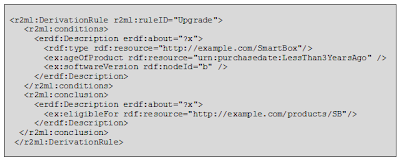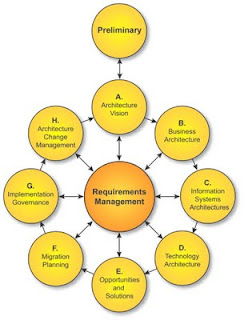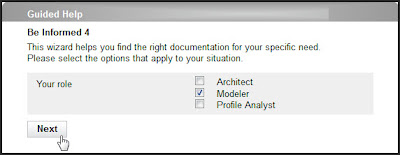Going beyond semantic tagging
When I introduced my topic "Using semantic technology to create process-driven documentation" in the technical communicators group, I received some feedback referring to semantic tagging.
While semantic technology offers us great possibilities to make our information accessible, it can easily lead to maintenance problems when not handled in the proper way. Using RDF, RDF Schema, XML or other specialized meta-data languages, it is – for someone who knows and understands these languages - relatively easy to set up a system that can lead to the desired situation. And as long as the meta-data is used in a consistent way, everything seems to work out fine. But as departments and teams change, the repository of used taxonomies and tags may become unavailable. When the organization rolls out new products, or changes its mission, new content may render today’s schema a relic.
Example: eRDF mark-up for a decision about an upgrade
Using any form of code or specialized metadata language in your content will make further development or distribution of the content highly limited. Semantic tagging has been around since the late '90s but hasn't had much of an impact in technical communication for this reason. So why would we succeed now in introducing semantic technology where others failed two decades ago?
Answer: We don't use codes or tags.
Using semantic tags is old-world thinking. Semantic technology is all about using a language that is understandable to both humans and computers. And the best way to represent this is by using models; separating the content from the structure and presenting them in a way that is understandable for both computers and users.
Example: The same decision in a model
By using fully model-driven semantic tools, we can express concepts and relations as business models in natural language. Such models are easy to use and maintain and can be linked to various content sources. Modeling domains are used to separate activities from functionality and from context. Linked together and backed up with the content, modeling domains provide us with an overall model for the documentation, which is in fact also the design of our documentation and can instantly be executed as a documentation application. All of this without a single line of code in our content.
Get ready for the next wave in documentation
At the STC Summit 2013 in Atlanta, I will demonstrate how we can use semantic technology to create process-driven documentation. I will do this by live modeling with a semantic tool set. As the models in the semantic environment are instantly executable, we can work together on some documentation concepts, change the models and review the results in a web browser. The session will be highly interactive with plenty of opportunities to influence the modeling process and simulate specific situations.
When: May 6th, 2:00 pm (EDT)
Where: Hanover FG, Hyatt Regency Atlanta
Level: Advanced
Download the white paper
The white paper “Improve Product and Brand engagement through smart documentation” is available for download on: http://info.beinformed.com/stc13 . You will be asked for your e-mail address here, which is only to keep you up-to-date on future downloads.




Comments